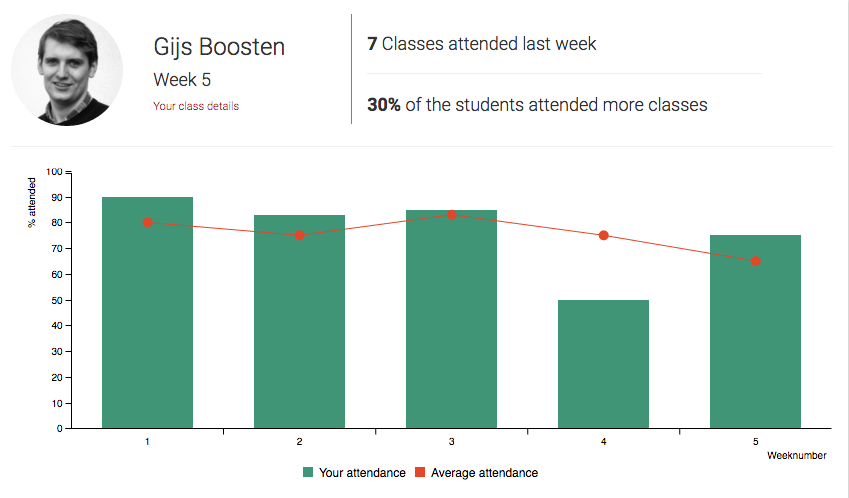Blogseries Learning Analytics part 2
Should we benchmark students in higher education?
As you may remember from primary school, you were probably comparing your performance to other students. This started with who could build the highest tower out of building blocks, or who could write their name first. This continues through secondary school, but it fades away in higher education. This can be reasoned by many factors, such a that the amount of students in one class makes it impossible to compare yourself to others. That said, an important question arises: Should competition stay a relevant factor in higher education?

One should distinguish between feeling competition and working in the so-called healthy competitive environment. This is due to the finding that “Competition brings a variable into the equation that shifts the participants attention from the task itself to attention to the cost of their performance in the task” (Johnson & Johnson, 2006; Reeve & Deci, 1996) which is not the aim while having student succession as the main variable.
Benchmarking brings Learning Analytics to the student
We believe that competition in higher education should connect to three other activities, that are truly relevant for a student: Evaluating, reflecting and, motivating.
As mentioned above, students themselves, particularly when starting to study at higher education, often have little idea of how they are performing. Let alone compared to their fellow students. This may affect the level of motivation, can result in having gaps in prerequisite knowledge, and lack key study skills. While mentioning evaluation, reflection and motivation, how can we apply them in the context of learning analytics?
Students themselves often have little idea of how they are performing
Providing students with information on how they are progressing and what they need to do to meet their educational goals is an important application for learning analytics. As a report on learning analytics in higher education indicates that benchmarking has potential to transform the students learning and understanding of how they learn by giving regular formative feedback as they progress through their studies. So how do we use benchmarking in Learning Analytics?
Current examples of benchmarking are grades that are based on how students perform compared to their peers. For instance use a normal distribution for grading, so if you have an 8 you are amongst the best 20% of the students in that class. As mentioned before this competitive element is only based on the past, and does not help the student during the semester.
Using real time data and comparison during the semester gives student insight weather or not they are on track to get the good grade. An example is the weekly reports Academy Attendance provides to students. In this report the student sees their own attendance score which is compared to the current cohort, previous years and their group. An example is shown in the figure above.
Benchmarking gives the student the conformation weather or not they are on the right track
These reports add to the competitive element, which can also be seen as “a check” for the student to know that they are keeping up with the group or with the progress of successful students in previous cohorts. On the other hand, if a student is underperforming this will also show in the reports, which of course can be demotivating for the students. Therefore the mentors receive a message, so they can work together with the student to improve their performance. This way benchmarking during the semester gives the student the conformation weather or not they are on the right track.
By monitoring and comparing the student's own progress during the semester, we believe that the student can better evaluate and reflect on his (academic) performance. And what about you, have you evaluated and reflected on your week already?
Bibliography:
Reports on learning analytics in Higher education, 2015
Johnson & Johnson, 2006; Reeve & Deci, 1996, Competition in a class room